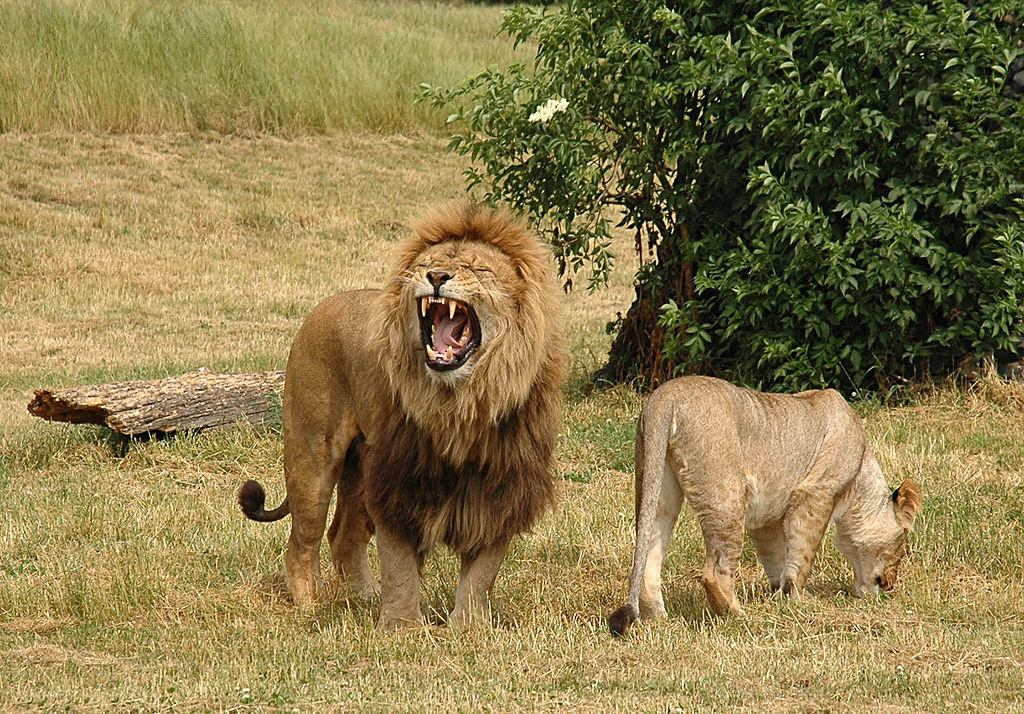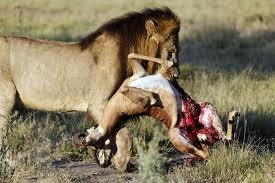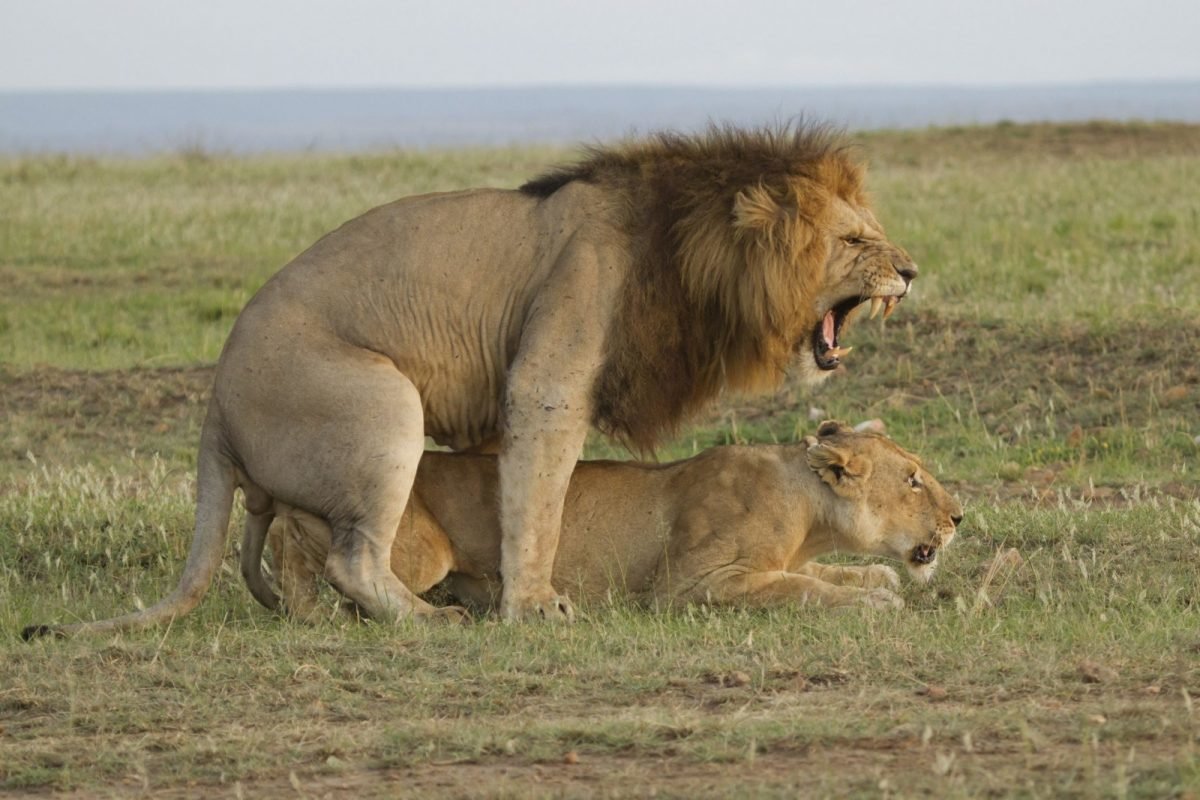Introduction
Understanding of the ecology of animals is very interesting. According to Humphreys (1997, p. 121), many of wildlife habitat encroachment has been reported worldwide. This has mainly happened due to the general increase in population. Increased population leads to high demand for food and other resources that led many to convert the animal habitats into poaching grounds and agricultural areas to feed the hungry population.
Panther Leo or Lion species is predominantly found in Africa where they have faced tremendous interferences from poachers who have different interests (Firouz 2005, p. 91). Some hunt the animal for skin while others do it for revenge reasons when they attack humans. Lion belongs to the genus Panther with other animals like the Tiger, Jaguar and leopard also. Lions are referred as a ‘king of beasts’ in the wilderness. This research focuses on the analyzing the life of a lion.
Geographic Distribution of the Species
Triefeldt (2008, p. 56) noted that lions are largely found in Africa and in some parts of Asia. The species is reported to be endangered in these areas. Some of the remnants are known to reside in Indian National park, the Gil forest.
From the historic perspective, some of the lion species are believed to have moved away from south west of Asia and North Africa. Until the recent past, lion was the most widespread mammal seconding humans. In India, the habitat of lions is in both the forests of dry savanna and the dry forests of deciduous scrub. In Africa, the lion species is found in grasslands of savanna where there are acacia trees. In the 480BC, lions were believed to be common in Greece.
They attacked a Persian king during his reign and were reported to be rare by 300BC. Most of the lions were eradicated on the arrival of firearms during the 18th century. Later in the 19th and 20th century, lions started becoming extinct in Southwest of Asia and North Africa. In most parts like India, lions have become extinct. Generally, lions are known to live mostly in the shrubby and forested areas. The picture below shows a lion in its habitat

Pattern of distribution of the species within its geographic range
According to Lions (1996, p. 58), different lion species are found in different environments depending on the geographical region. However, Africa is commonly known to harbor many lion species, their distribution pattern vary from one location to another within the continent.
In some parts of Africa, for example the Eastern part has a considerably high number of lion species compared to the number of the same species in other parts of Africa. In the Asian region, the most commonly found species is the P.L persica. In Africa, researches show that there are five different sub-species found within different geographical regions. These lion species include, the Panther a Leo senegalensis that is found in the parts of Western Africa and P.I.azandica found in the Northern East of Congo.
Followed by the P.I.bleyenberghi, a species that is found in Angola and southern parts of Congo, and the Panther a Leo krugeri also known as P.I. verneyi that include the lion species from Kalahari and P.I krugeri, which is found in southern Africa. In the Eastern Africa, there are the P.I nubica, the lion species that are categorized into Masai, Somali, Serengeti, and Congo lions.
Individual distribution
Lions are well organized. Based on their sexes, there is division of roles or duties. The animals due to their form of organization rarely live in isolation. Female lions giving birth at the same time have a shared responsibility of bringing up the cubs (Riley 2008, p. 79). A part from hunting for these cubs, lioness would breastfeed them irrespective of the specific cub mothers.
The male lions’ big responsibility is to protect the female lions and the young ones. Lions therefore live in groups or prides. A pride on average can comprise 13 lions, both males and females. They also do the hunting in a group and in very rare occasion, a lion will go hunting individually.
Major habitats that the species occupies
Hunter (2005, p. 46) says that the lion’s habitation varies. Their habitats include plains, forests, and grasslands. Quite a good population of lion species is known to reside even in the semi-arid and at high altitude areas except within the tropical rainforests and extremely desert areas. In fact, a lion species is known to live in Ethiopian Bale mountains that are 4,240 m. African lions are commonly found in savanna habitations or in plains.
These areas are believed to have a high prey base. Lions in Asia found in Gir forest India. The lion prides which constitute both sexes range from two to 40. Within the pride, male lions are usually more than their female counterparts are. In most instances, lions are found in groups, an adaptation that helps in increasing their efficiency when hunting and in guarding their territorial boundaries against other animals.
Important habitat components
According to Humphreys (1997, p. 127), lions inhibit a wide range of habitats. Mostly they prefer inhibiting in areas that are forestry and shrubby. As seen earlier, these animals like hunting in the darkness in order to hide from the prey. They also like a habitat with some kind valleys to make the hunting easier for them since such areas help them hide from the prey aimed.
As discussed earlier, lions live not in isolation but in groups. The female do most of the hunting especially hunting the light prey like gazelles and wild beasts. On the hand, male like hunting huge animals like zebras and buffalos. Both male and female lions have different preferences for prey hunted.
Most of this species as seen from the discussion above, in Africa they are mostly found in Kalahari. This place is full of scattered acacia trees. They like such a place because they shelter under these trees during sunny seasons. Female lions also give birth under trees or under shade.
Foods eaten
According to DeGraaf (2000, p. 28) lions are predatory and carnivorous animals. The lion’s prey range from the small sized to the large sized animals. Their diet is mainly comprised of birds, rodents, buffalos Zebras and many other small and big animals. The lion as said earlier has the dominion over almost all other animals in the wilderness.
Lion, the king of the Jungle, is able to straggle and kill animals like Rhinos, Antelopes, Zebra, and many others to obtain food. The animal is very cunning .After killing other animals; lions ensure that they do not share their kills and do chasing away other predators. The figure below shows a lion carrying away its prey.

McGuire (1989, 40) says that in most of the occasions, the female lions do the hunting. Hunting activity is usually individually and in prides also. The prides just like female and male lions, differ in food preference. Female lions prefer hunting preys like antelopes while their male counterparts prefer large animals like buffalos (Mitra 2005, p.125).
The hunting is normally done in groups and at night. Lions are much slower compared to the speed of most of their prey. Although they can also run fast, most of the preys they hunt are faster hence, hunting at night helps them in concealing their presence against the animals they hunt.
Timing and pattern of reproduction
Marshall (2010, p. 114) observes that lions are polygamous in their breeding. The gestation period of lions is around 110 days. Their breeding is throughout the year. By the age of four years, most lionesses are ready for reproduction. Mating takes place at specific times of the year among the lion, which can take several days (Mitra 2005, p.35).
A female lion, when on heat can mate with several different males. When giving birth, the female lion isolates to a sheltered place away from the rest of the pride. Some researches show that lions breed well in protected area such as game parks. A lioness on average can give birth from two four cubs per each attempt. After birth the female does not immediately mate again, it takes some time, usually about two years. The cubs are usually blind at birth. Their eyes open roughly after a week. The diagram below shows lions mating.

Olney (1994, p. 89) says that the mother lioness hunts for its young ones and protects them from predation until they are able to support themselves. In a situation where many lionesses have given birth at the same time, they share the responsibility of rising as well as feeding the young ones. Cubs’ mother isolates from the rest of the pride for a maximum period of 8 weeks. Weaning of the young lions can start from the seventh month.
Normally, at the age of 3 years, a male lion riches maturity and at the age of 5 years, they are in a position to defend other pride members. The female lions mature so fast and from the age of 4 years, they are ready for procreation. The male lions rule the prides and always fight for their chances to take over the ruling position in a pride (Feldhamer 2003, p. 56). There is therefore a continuous competition between female lions and males over their social structure.
Conservation or Pest Status
According to Skinner and Chimimba (2005, p. 118) most lion species live in Southern and Eastern Africa. It is reported that despite the breeding ability of lions, their number is decreasing each day. Estimations indicates that about 23,500 lions are in African protected areas against the 100,000 lions present a century before (Olney 1994, p. 119). The main pest affecting the lion species are the humans. Poaching of lions and human encroaching the lion’s habitats, has been on rise.
There increased cases of human-wildlife conflicts, a factor that is facilitated by loss of habitats for these animals hence migrating to human habitations. Due to habitats loss and poaching, the population of the remaining lion species lives in isolation, a factor that encourages inbreeding leading to decrease in genetic diversity. Interference of the lions habitats buy humans as posed a serious impact on species conservation (United Nations Environment Programme 2008, p. 113).
There is need to create awareness to the public on the importance and need for conserving lions and wildlife in general. A part from humans, lions also face predation from other animals. Although lions are serious carnivores, they are predated upon by animals such as cheetahs, hyenas and leopards which are commonly known in killing the lion young ones and the aged lions.
Population Management
According to Fleagle (1999, p. 81), after the realization that the population of lion species is decreasing every day, a number of coordinated measures has been put in place to manage the remaining population. This plan was started in 1982 for those lions in Asia, but since the lions in this region were discovered impure genetically, the plan was suspended (DeGraaf 2000, p. 78).
The plan of lion population management in Africa started a year later focusing mainly on the subspecies in the southern Africa. This plan has been faced by a series of challenges. Most of the captive lions are from an unknown origin and diversity, a factor that makes population management based on their genetic diversity difficult. Amongst the pride, lions have a way in which they manage their population.
Lions after giving birth always like staying with their young ones in the same pride so that they can continually watch over them. This process continues up to around 40 lions, which is the maximum number for a pride. After acquiring the maximum number, that a pride can support, the incoming extra lions split and shift to a different region for easy management and foraging. This avoids competition over resources like food, water, and shelter.
List of References
DeGraaf, R 2000, New England wildlife: Habitat, natural history, and distribution, University Press of New England, Hanover.
Feldhamer, G 2003, Wild mammals of North America: Biology, management, and conservation, Johns Hopkins University Press, Baltimore.
Firouz, E 2005, The complete fauna of Iran, Tauris, London.
Fleagle, J 1999, Primate adaptation and evolution, Academic Press, San Diego.
Humphreys, P 1997, The lion and the gazelle: The mammals and birds of Iran, I.B. Tauris, London.
Hunter, L 2005, Cats of Africa: Behaviour, ecology, and conservation, Struik, Cape Town.
Lions, J 1996, Lions’ commentary on Unix 6th edition: With source code, Peer-to-Peer Communications, San Jose.
Marshall, C 2010, Mammal anatomy: An illustrated guide, Marshall Cavendish, New York.
McGuire, L 1989, Lions, Aladdin Books, New York.
Mitra, S. (2005). Gir Forest and the saga of the Asiatic lion. New Delhi: Indus.
Olney, P 1994, Creative conservation: Interactive management of wild and captive animals, Chapman & Hall, London.
Riley, J 2008, African lions, Lerner, Minneapolis.
Skinner, J & Chimimba, C 2005, The mammals of the southern African subregion, Cambridge University Press, Cambridge.
Triefeldt, L 2008, Plants & animals: A special collection from the World of wonder series, Quill Driver Books/Word Dancer Press Sanger.
United Nations Environment Programme 2008, Africa: Atlas of our changing environment, United Nations Environment Program Nairobi.